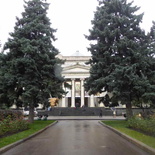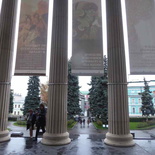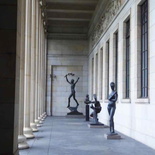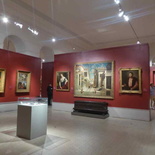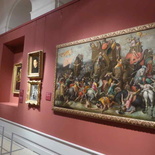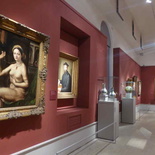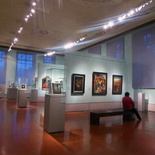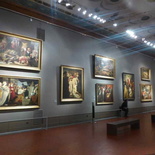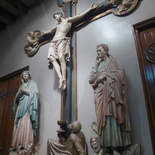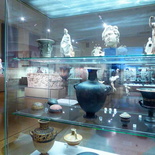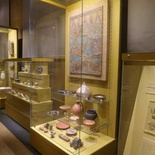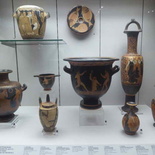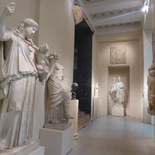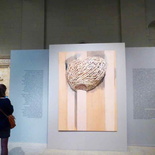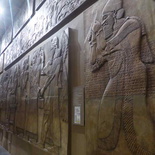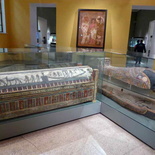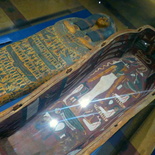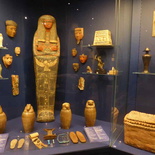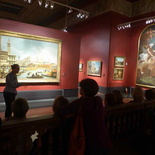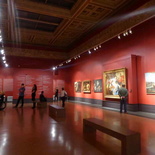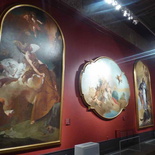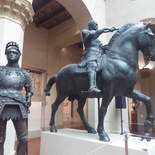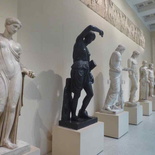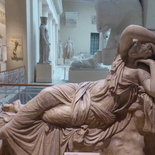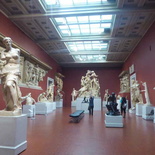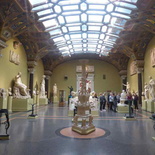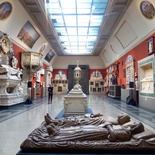The Pushkin State Museum of Fine Arts is the largest museum of European art in the Russian Capital of Moscow. Geographically, it is located along Volkhonka street and is about a 15 minute walk from the Kremlin Royal Amoury. Also, it is located just opposite another iconic Moscow landmark, the Cathedral of Christ the Saviour. It is also known in Russian as the Музей изобразительных искусств им. А.С. Пушкина.
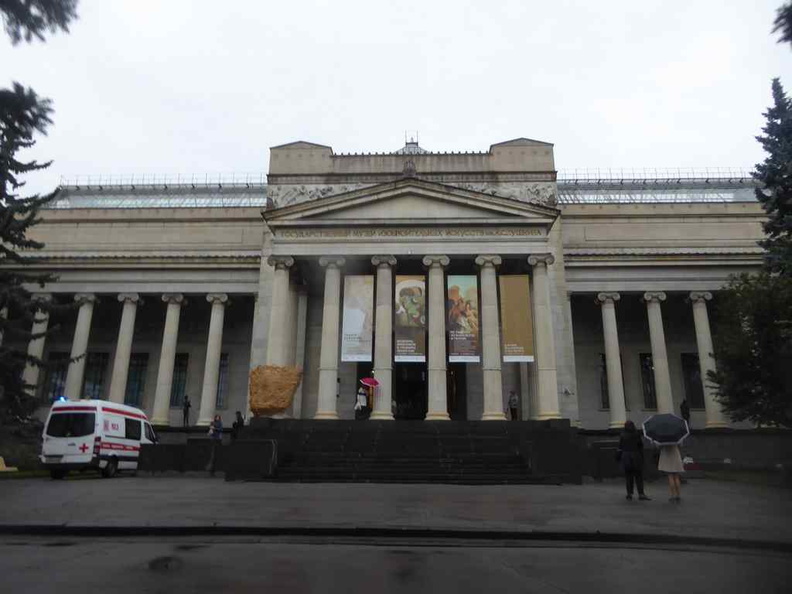
At the front gates, you enter the museum through a small front open garden leading you right into Museum building front. The façade is plain and simple, cast in plain concrete with large pillars. Notably, it does resemble the look of a town hall.
Moreover, on abit of construction history, the building was designed ground up as a museum by Roman Klein and Vladimir. Construction was led by head structural engineer Ivan Rerberg. Construction of the Pushkin State Museum lasted 14 years, from 1898 and completed about early 1912. Henceforth, the building subsequently underwent restoration works in 2008.
Lobby and Ticketing
On entry behind the front wooden double doors is a long marble lined stairwell with large supporting pillars. The ground floor lobby and ticketing counters greet you in this area.
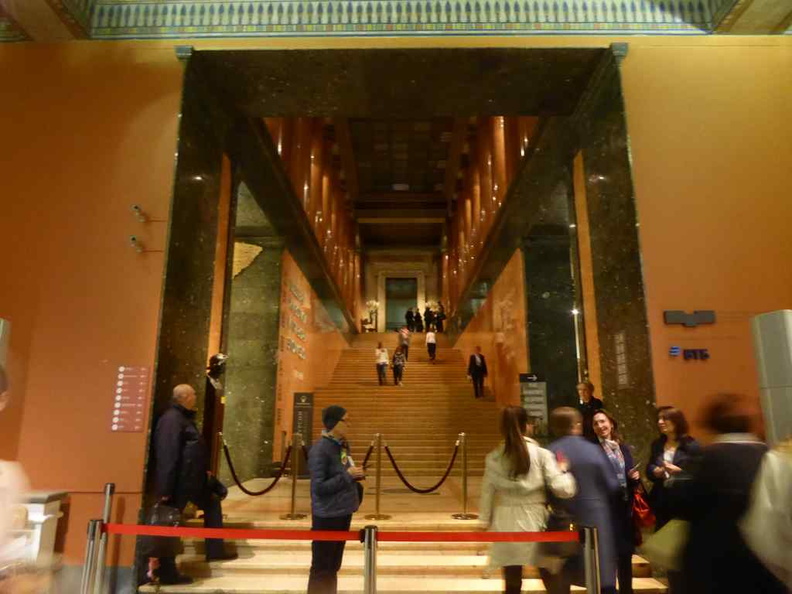
Tickets for adults cost 400 Rubles. It grants you access to all Permanent Exhibitions hall and essentially the gist of what the museum offers. Sometimes, the Museum has temporary exhibitions at a payable extra (about 300-400 Rubles extra), which you can choose to go if time permits, but it is not essential.
The Galleries
Moreover, this grand staircase links the ground entrance to the upper second floor galleries. Also, the museum layout comprises of two floors with a mix of different interior styles and wall deco used throughout the building.
Furthermore, here, you find long narrow corridors as well as vast staircases and cavernous atriums. Some atrium even have a basement extension which adds more depth to the space.
Of course, being a Fine Arts’ building, the Pushkin State Museum has its fair share of art offerings. Paintings here date as far into the 19th and 20th century.
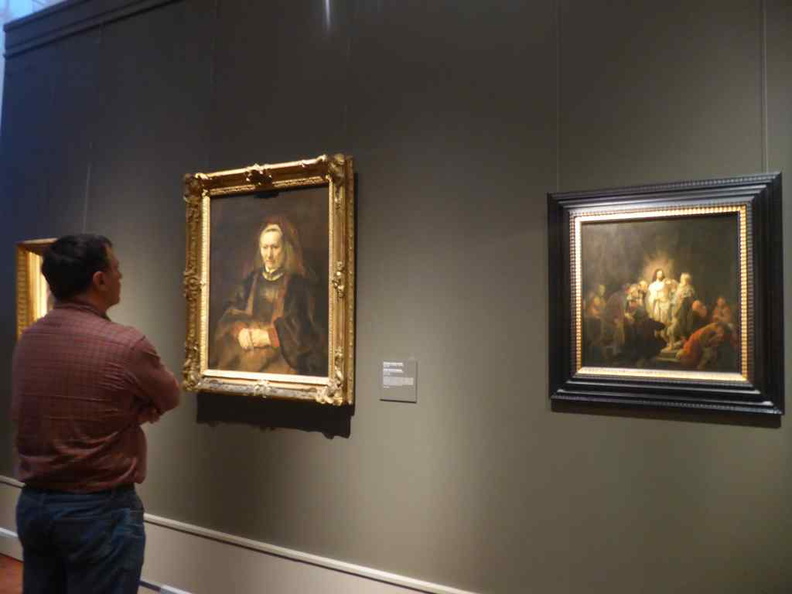
Furthermore, notable artwork on display includes those by Rembrandt, Claude Monet, Degas, Van Gogh and Picasso. Also, on display too are pieces from Rumyantsev Museum (Moscow) and State Hermitage
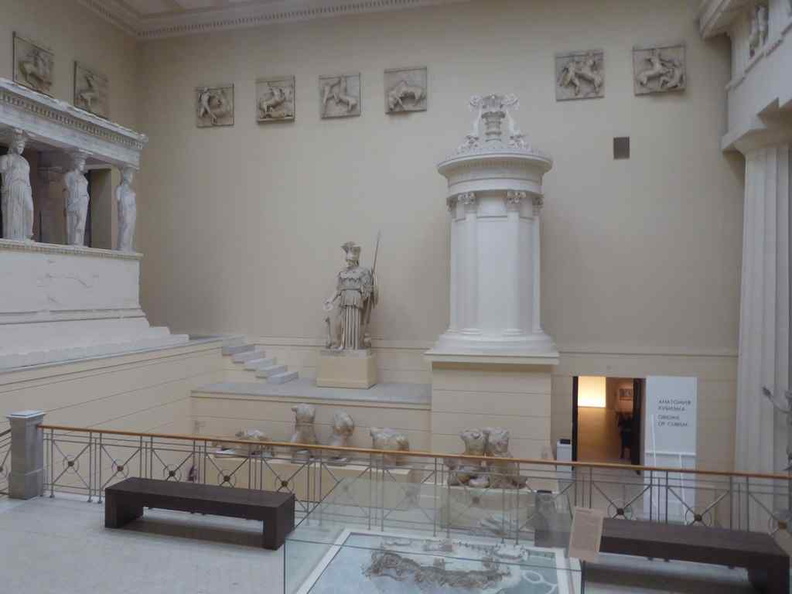
You can start off from the first floor comprising mostly of a mix of paintings, and religious artifacts. The halls on the ground floor here are distinguishable by their light teal coloured walls.
These ground galleries also leads into separate halls housing a variety of religious items. There is an extensive section dedicated to Christian artifacts, murals and fixtures. This is surprising despite Russia’s unorthodox history and influence of atheism under the totalitarian Soviet Union rule.

Grand galleries
Furthermore, taking centerpiece in the Museum is two large expansive spaces with a tall glass lit open atriums. Moreover, there is a large model of a life-sized replica of Michelangelo David taking center stage in an open sky-lit courtyard. Also on display here are a couple of oversized sculptures like a Horseman.
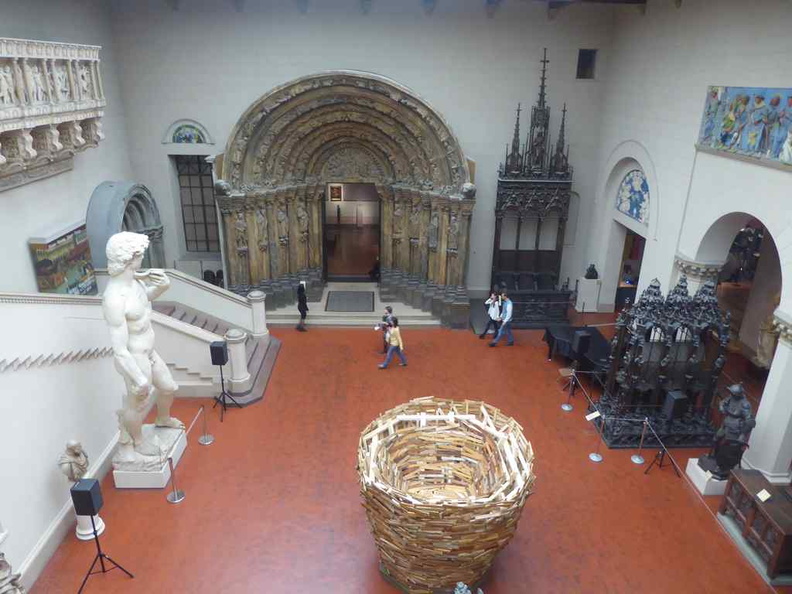
In the other atrium is a basement gallery dedicated to house several of Picasso artwork. Additionally, here is also where you can find the pottery, Middle Eastern Art and Ancient Egyptian items.
Pottery galleries
Pushkin’s pottery gallery houses over 1,000 pots and vessels. These are all encased in a large gallery through glass cases.
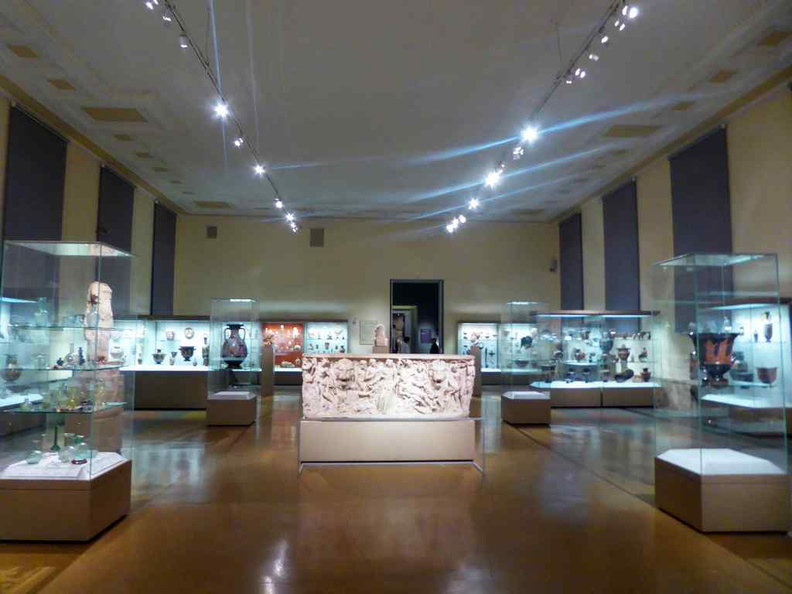
Many artifacts were found during long-term archaeological expeditions to ancient cities around the world. For instance, examples includes the Greek city Panticapaeum and Scythian Neapolis in Crimea.
Notably, the pottery galleries are usually devoid of visitors. Patrons generally prefer to frequent the more visually appealing painting and sculpture galleries. Nonetheless, there are some nice collections on displays here, including metal ware and nicely painted earthen pottery.
Archaeological collection
The pottery forms part of the on-site Archaeological collection. Also, pieces of Byzantine art here form one of the Museum earliest collections. On display are a variety of mosaics and iconic trinkets.
Additionally, the archaeological collection comprise mainly of Egyptian artifacts include ritual accessories and few pieces of sarcophagi which used to contain a mummy.
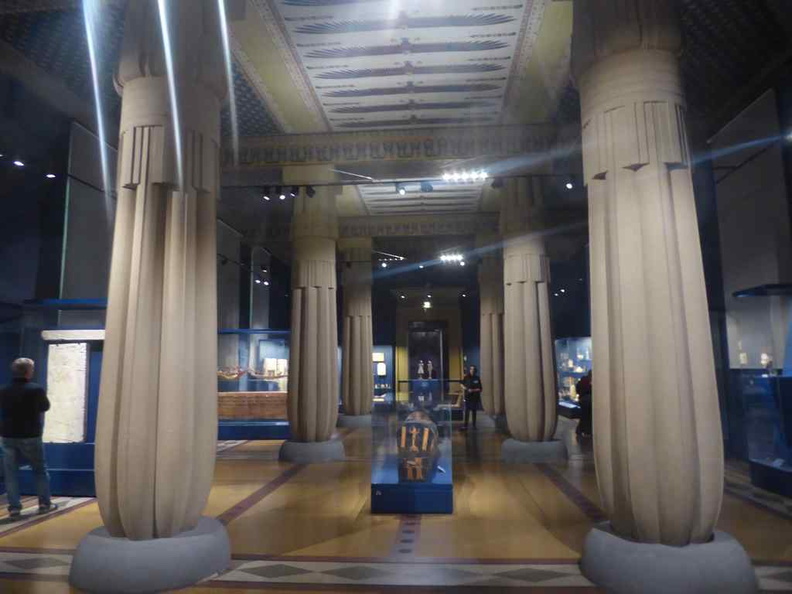
Moreover, the paintings on the sarcophagi are notably very nicely preserved. In addition to ceremonial tools are Mummy portraits, golden diadems, and even bronze statues of walking Harpocrates.
Furthermore, the Museum’s Egyptian collection range from a mix of private collection items as well as contribution from other museums. The gallery regular does free tours, but only in Russian. So we are quite out of luck for English visitors. Thankfully the maps and audio-guides (which you can rent with a deposit) are available in English.
Furthermore, the galleries are linear and are very easy to navigate through. They correspond nicely to the labels on the museum map so it is difficult to get lost. The exception is staircases linking between buildings, where they often bridge between two dissimilar floors.
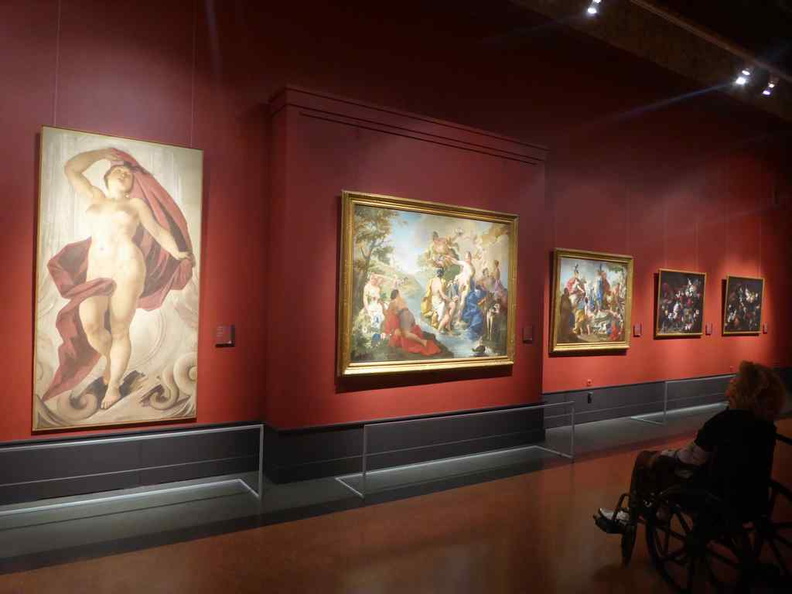
Western European sculpture hall
Moving up on the second floor houses more paintings, as well as a Hall Sculptures in a grand gallery. Additionally, on display are about 600 pieces of sculptures from Antiquity to the Renaissance.
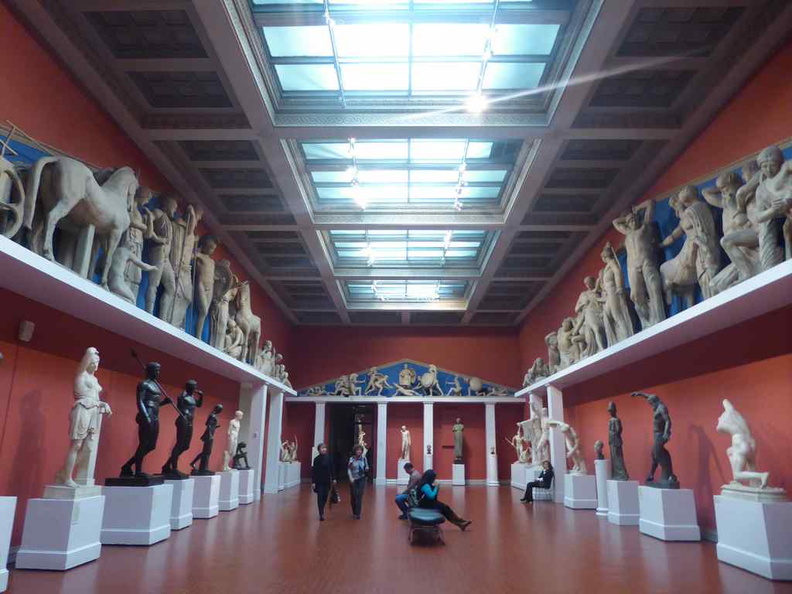
It is a rather expansive and bright central gallery with plenty of seating spaces to admire the works of art. Each main sculpture of interest has it’s own stand and a row of sculptures are placed near the ceiling running the entire length of the hall.
However, a thing I find somewhat disappointing is that most of the Western European sculptures on display are plaster casts of instead of original marble. But, nonetheless, they are accurate reproductions of the originals and even aged well to look like the real thing. Still, it is a good educational alternative for visitors here.
In addition to oil paintings are Graphic Arts and Print. Also, there are about 400,000 prints here, making it the largest offering in the museum. Displays also date as early into the 1924 with works by famous artists such as Albrecht Dürer and Rembrandt. If you are interested in Fine arts paintings, also do consider visiting the State Tretyakov Art Gallery, also in downtown Moscow.
Good for a half day out
In conclusion, the Pushkin State Museum is an attraction worth visiting just for the collection of paintings. Also, its close walkable proximity from the Grand Kremlin and Armory building makes the Pushkin Museum an ideal place to visit when you are in town. You are good for about 2-3 hours in Pushkin. Also the museum closes late at 8pm, with extended hours till 9pm on Thursdays, also making it an ideal attraction to visit to wrap up your Moscow day sightseeing.

